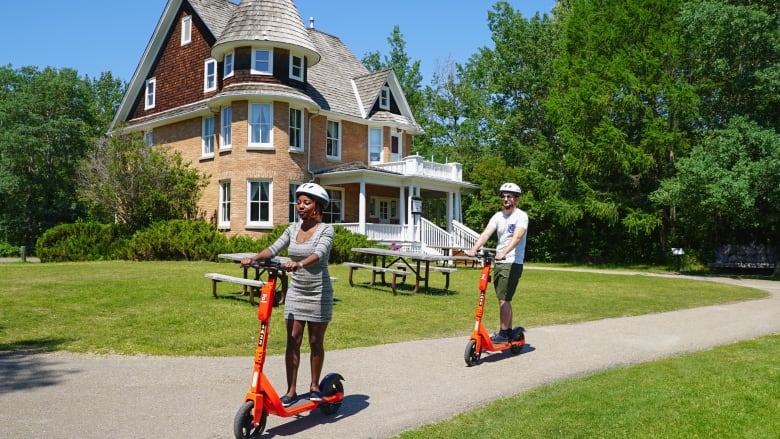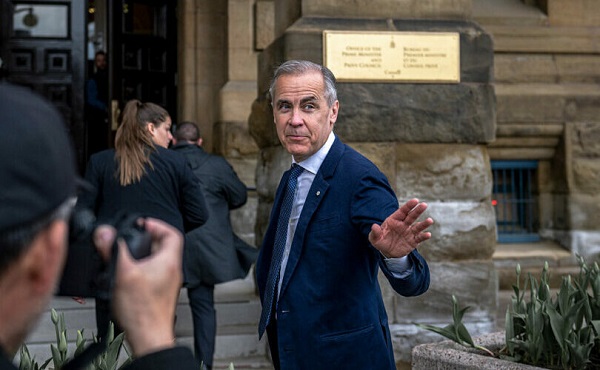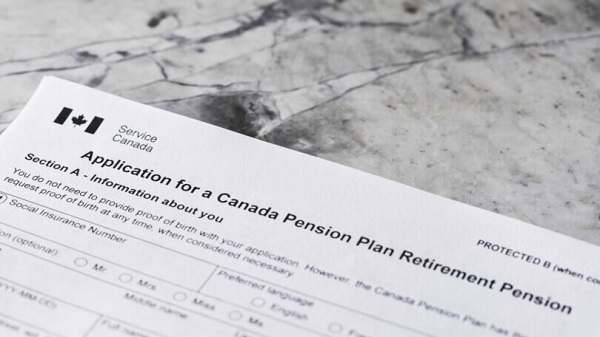City of Red Deer
City Council approves E-scooters permanently after 3 year pilot

E-Scooter Pilot Program update
- Council approved E-scooters as a permanent transportation option in Red Deer, following a three-season pilot program that ended in October. No changes to the program were proposed, as bylaw amendments to the Business Licence Bylaw and Traffic Bylaw were completed as part of the pilot program.
- Benefits to allowing E-scooter companies to operate in Red Deer include alignment with City of Red Deer strategies such as the Multimodal Transportation Plan and all three focus areas of City Council’s current Strategic Plan – Thriving City, Community Health and Wellbeing, and Engaged and Connected City.
- In 2023, 100,909 rides were taken on E-scooters. The average distance traveled per ride was 3.35 km and the average ride time was 18.2 minutes. Riders are required to be a minimum of 16 years old and are advised to wear a helmet.
- The 2024 E-scooter season begins March 15. Learn more: reddeer.ca/escooters
Similar to car and bike sharing technology, shared e-scooters will be GPS-enabled and can be rented using each company’s smartphone app. A shared e-scooter can be parked in a designated drop zone that is not impeding pedestrian traffic. It is then available for the next customer, who will be able to locate it and begin the rental using an application on their phone.
How old do I need to be to ride an e-scooter?
To ride an e-scooter in Red Deer you must be 16 years of age or older. A child or any other person cannot be a passenger on a shared e-scooter. They are intended for one rider.

Do I need to wear a helmet while riding an e-scooter?
Helmets are not required, but are strongly encouraged.
What is the speed limit for e-scooters?
The max speed limit is 20 km per hour with some higher traffic areas reduced to 5-10 km per hour.
How will I be able to park an e-scooter?
E-Scooters can be parked on city sidewalks, in City parks and adjacent pathways, subject to all Federal, Provincial and City Legislation. All parked e-scooters must remain in an upright position with all wheels in contact with the ground.
E-Scooters will be parked in a Furniture Zone and must not be parked in a way that does not obstruct or interfere with the Sidewalk Zone or Edge Zone at any time.
In the absence of a Furniture Zone, e-scooters must not be parked in a way that impedes pedestrians moving through the Sidewalk Zone to access any buildings. E-scooters must be parked next to the edge zone leaving at least 2.0 metres of sidewalk zone unobstructed for pedestrian movements. E-scooters must not be parked where these minimum distance requirements cannot be met, and parked in the upright, standing position, with all wheels in contact with the ground.
- Pedestrians first– Always yield to, and be mindful of people walking on sidewalks.
- Be considerate– Use the bell to alert others when passing on the sidewalk or pathway.
- Rider safety rules – Shared e-scooters are available to riders aged 16+. Helmets are encouraged but not required. Maximum speed limit is 20 km / hr. Only one rider per e-scooter is allowed.
- Park responsibly– Park in a secure, upright position in designated areas, such as furniture zones of sidewalks, public bike racks and other marked parking zones. On sidewalks without furniture zones, give at least two meters of clearance for accessibility.
- Right and report– If you see a shared e-scooter toppled over or parked improperly, help out by righting the shared e-scooter or reporting the issue. Contact info for each company is provided on each shared e-scooter.
City of Red Deer
City of Red Deer Employee Honoured with Bob Stollings Memorial Award for Outstanding Contributions

Annette Scheper, Community & Program Facilitator in the Safe & Healthy Communities Department is The City’s 2025 recipient of the Bob Stollings Memorial Award.
The Bob Stollings Memorial Award is given out each year to a City employee who displays outstanding performance in alignment with The City’s RISE cornerstone values – respect, integrity, service and excellence. Nominations for the award are submitted by fellow coworkers detailing the employee’s achievements professionally and interpersonally, along with letters of support. The award is considered a great honour among City staff.
With an impressive 22-year career, Annette has played a pivotal role in shaping Red Deer’s cultural and special events landscape. Her leadership and innovation have brought thousands of successful events to life, creating lasting traditions that enrich the lives of residents. Her commitment to excellence and resourcefulness has ensured that community initiatives are inclusive, accessible, and impactful.
One of Annette’s most notable achievements is the development of the Community Loan Program, which provides essential resources for local groups, contributing an annual value of $86,778.95 back into the community. In addition, she has successfully led and executed a variety of large-scale events, demonstrating remarkable problem-solving skills and a dedication to sustainability. From creating elaborate event designs with repurposed materials to managing complex logistics, she continuously sets the standard for excellence.
“Annette exemplifies the best of our organization,” said City Manager, Tara Lodewyk. “Her unwavering dedication, innovative thinking, and ability to bring people together has made a profound impact on our city. This award is a testament to her hard work and passion for creating meaningful experiences for our community.”
The Bob Stollings Memorial Award was first established in 1985 and is presented every year to honour Robert (Bob) E. Stollings, a loyal and dedicated City employee from 1960-1984.
City of Red Deer
Red Deer will choose a new Mayor as Ken Johnston decides to step away

It’s a telling detail about the person who leads Red Deer City Council. Always putting the city’s needs ahead of his own, Mayor Ken Johnston has announced his intentions within days of the opening of Nominations for October’s municipal elections,
After 12 years on council, Mayor Ken Johnston has decided against running for a second term as Mayor this fall. Johnson shared his decision in front of colleagues and supporters in a touching announcement on Wednesday.
At 71 years old, Johnston remains vibrant, passionate and healthy. He says that’s exactly why he and his wife Carolyn have decided now is the right time to start their next stage of life together.
Mayor Johnston listed a number of highlights and achievements he can look back on, including his help advocating for the redevelopment of Red Deer Regional Hospital, the growth of Red Deer Polytechnic, and positive moves in Economic Development.
All these lead of a feeling of ease about the decision to step away, though affordable housing and a permanent shelter for the homeless remain pressing concerns.
With about 8 months remaining in his term, Mayor Johnston is planning to push hard to move the needle on these housing issues.
“We’re looking forward to some more work and we’ll be going to the community shortly about it. So I still have optimism that maybe before the term is out we can have an announcement.”
This is the second major political announcement in Central Alberta in the last number of days. Earlier this week Red Deer Mountain View MP Earl Dreeshen announced he won’t be running in the next federal election.
-

 Addictions22 hours ago
Addictions22 hours agoMan jailed for trafficking diverted safer supply drugs, sparking fresh debate over B.C. drug policies
-

 Alberta1 day ago
Alberta1 day agoHow Trump and Alberta might just save Canada
-

 Business23 hours ago
Business23 hours agoThe Liberals Finally Show Up to Work in 2025
-

 Alberta22 hours ago
Alberta22 hours agoJann Arden’s Rant Will Only Fuel Alberta’s Separation Fire
-

 Bruce Dowbiggin19 hours ago
Bruce Dowbiggin19 hours agoCaitlin Clark Has Been The Real Deal. So Her WNBA Rivals Hate Her
-

 Banks20 hours ago
Banks20 hours agoCanada Pension Plan becomes latest institution to drop carbon ‘net zero’ target
-

 Daily Caller21 hours ago
Daily Caller21 hours agoThere’s A Catch To California’s Rosy Population Stats
-

 espionage2 days ago
espionage2 days agoTrudeau Government Unlawfully Halted CSIS Foreign Operation, Endangering Officers and Damaging Canada’s Standing With Allies, Review Finds


